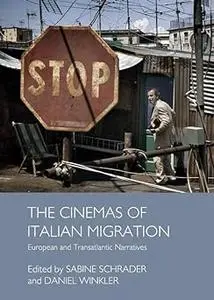Sabine Schrader, "The Cinemas of Italian Migration: European and Transatlantic Narratives"
English | ISBN: 1443846244 | 2013 | 340 pages | PDF | 2 MB
English | ISBN: 1443846244 | 2013 | 340 pages | PDF | 2 MB
Italy is more strongly influenced by the experiences of migrants than many other European countries. This includes an historically ongoing internal migration from the south to the north which is strongly echoed in Neo-realism, a mass emigration mainly from western Europe and North and South America that is connected with mafia films, among others, in Italy's collective imaginary as well as a more recent immigration influx from the southwestern Mediterranean which is dealt with at a film level in New Italian Cinema in the recent decades. Thus, three forms of migration have affected politics as well as Italy's film history, the latter, through the development of new genres and sub-genres. In this manner, questions concerning cultural studies are intersected with those of film aesthetics in this volume. The Cinemas of Italian Migration: European and Transatlantic Narratives brings together for the first time international contributions on the early post-WWII cinema like Il cammino della speranza (The Road to Hope Pietro Germi, 1950) or I magliari (The Magliari Francesco Rosi, 1959) with Migrant Road Movie classics like Lamerica (Gianni Amelio, 1994) and contemporary Italian comedies like Into Paradiso (Into Paradise Paola Randi, 2010). Additionally, this volume includes articles dealing with often marginalized filmmakers (e.g. Vincenzo Marra, Roberta Torre), independent productions (among others, Carmine Amoroso's Cover Boy, 2006) and genres like contemporary Italian documentary films (e.g. Andrea Segre's A Sud di Lampedusa/South of Lampedusa, 2006). The migration narratives are shaped by European and transatlantic filmmakers, not only by Ferzan Ozpetek but also by Werner Schroeter from Germany, Denis Rabaglia from Switzerland, Martin Scorsese from the US and Sandra Gugliotta from Argentina, to name just a few examples.
Read more



